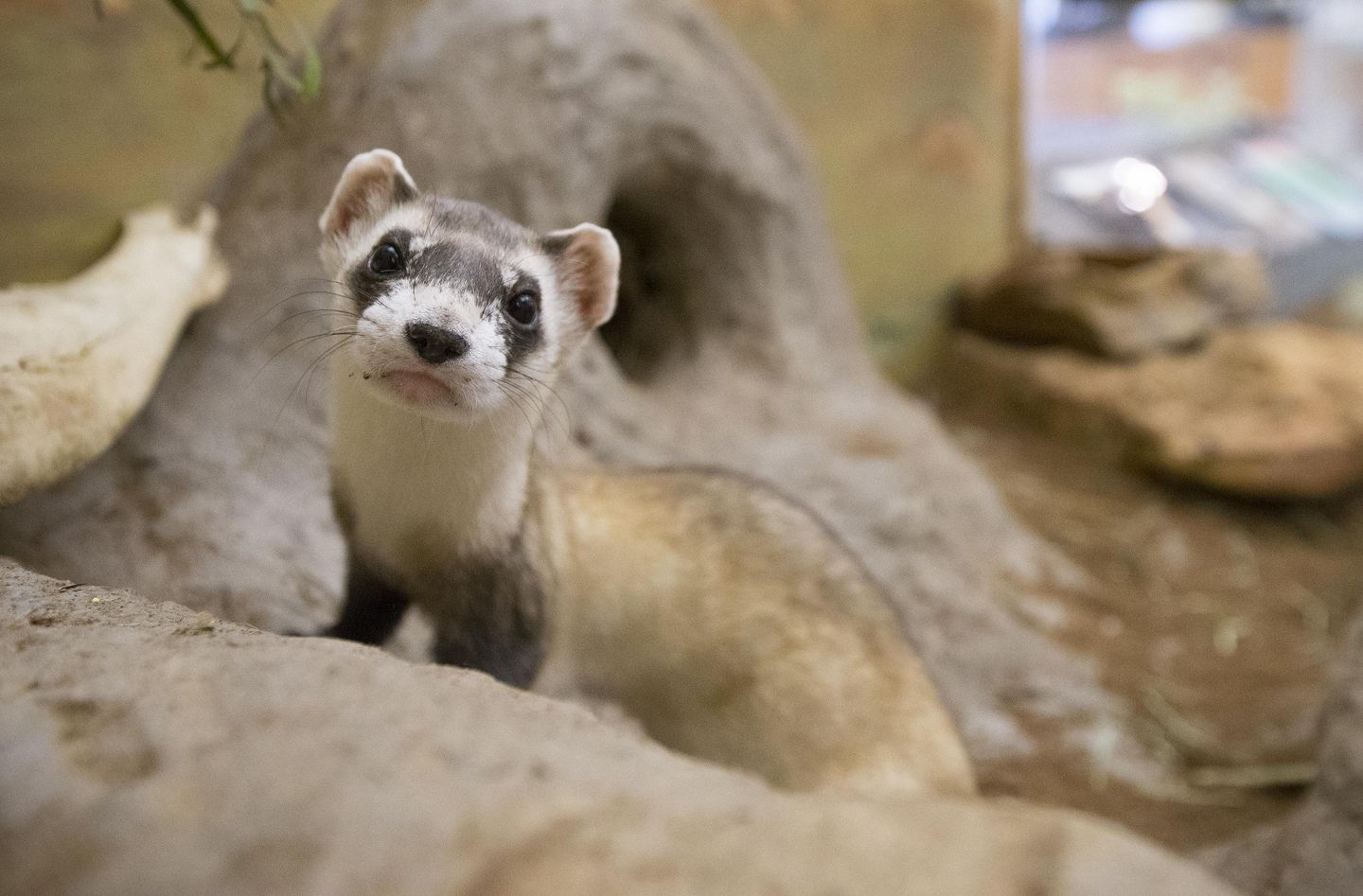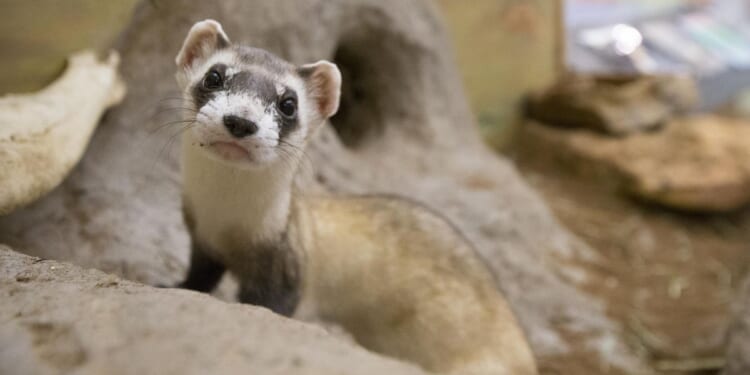
The government shutdown poses issues for humans and animals alike, with wildlife groups worrying about the fate of the black-footed ferret.
Roughly 300 such mammals in the weasel family are in the wild, according to Defenders of Wildlife, and the shutdown has stalled federal conservation efforts.
The black-footed ferret is considered one of North America’s most endangered mammals. The U.S. Fish and Wildlife Service wants to reintroduce the 300 into the wild, but according to Defenders, the shutdown has “frozen operations, leaving ferrets in a remarkably dangerous situation, inching them closer to extinction.”
“Fall is the most critical time for ferret reintroduction: it’s when ferrets establish territory, learn to hunt, find mates, and prepare for winter,” the group said in an email. “Delays now could mean missing the narrow window for optimal survival.”
The Washington Times has reached out to Defenders for comment.
The ferrets were first listed as endangered in 1967, and by 1980, a captive black-footed ferret died and the species was thought to be extinct, according to the National Park Service.
However, in 1981, a ranch dog in Wyoming killed a black-footed ferret and brought it to its owners. A trip to the taxidermist with the animal informed the ranchers that their discovery was monumental, proving the species was still alive.
The ferrets rely on prairie dogs to survive because they live in their abandoned burrows underground, and the rodents make up 90% of the ferret’s diet, according to the NPS.
A coalition of the U.S. Fish and Wildlife Service and federal, state, tribal and nonprofit partners has tried to save the species. The group captive-breeds the ferrets at five zoos and at the National Black-Footed Ferret Conservation Center in Colorado.
The bred ferrets are then reintroduced to the wild at western sites, including in Canada and Mexico, according to the FWS.
The Washington Times has reached out to the FWS for comment.
The recovery has faced setbacks before. Earlier this year, as part of the Trump administration’s Department of Government Efficiency cuts, Tina Jackson, the head of the FWS’ entire black-footed ferret recovery program, was fired, along with hundreds of other employees of the agency.
“Friday, February 14, I had a meeting show up on my teams calendar for 11 that morning,” Ms. Jackson told Denver’s 9News in March. “And on that teams call, those of us within the Fish and Wildlife Service heard that we were being let go that day. … Three of us were let go — so two of the wildlife technicians that help with the care and breeding of the animals, as well as myself.”
Ms. Jackson told the NBC affiliate that a lot goes into saving the ferrets, and bumps in the road could prove disastrous.
“You know, the other work that’s happening outside the captive program, the coordination with the release sites, the disease management with sites across the range, that sort of work, it’s possible we lose those 500 animals in the wild if we don’t have that sort of partnership and that coordination happening year after year,” she said.








